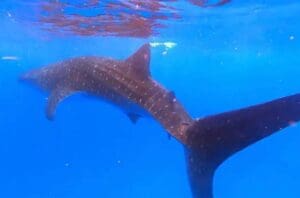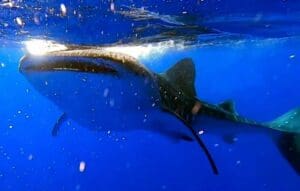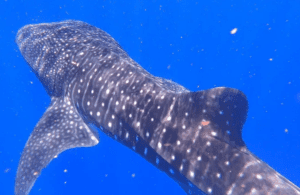Whale Sharks Hawaii – Giants of the Deep
Swim with Whale Sharks
Join us on either of our tours to help collect data for our partner HURC. When sighted, conservation photography is used to identify individual whale sharks. When a whale shark is encountered, we’ll get photographers into the water quickly. Our research focus is to photograph skin patterning behind the gills, as well as any scars (entanglement!). Sighting data (location, size, gender) are recorded along with id photos. Do know that during collection, it is recommended to give about 10-12 feet of space around the whale shark, and sightings are only a few times a year (depending on much effort is given to finding them).
The best odds of coming across or swimming with a whale shark is on our full day boat tours where we visit the most productive feeding areas. Geared for photographers, anyone can join and enjoy our private boat in the company of guides with extensive knowledge of local wildlife – and how to find them! We’ve seen whale sharks on our shorter tours as well, but the more time, more area covered, and the most days spent doing so, the better odds to realize your bucket-list adventures.
Whale Shark Sightings
Our Oahu charters have came across and identified a surprising number of new individuals on the Waianae coastline since beginning a collaboration with Hawaii Unchartered Research Collective (HURC). With whale sharks sightings reaching record numbers overall – whale shark sightings are occurring way more often than previously thought!
We’ve been able to name whale sharks that we found and that HURC identified as new individuals. So far we have ‘discovered’ Alaka’i, Noelle, Jaxson (entangled), JJ, Kalea, Lynn, Mackey, Giant, Iris, Sylvia Earle, and one still processing. That’s 11 new individuals in the past 5 years!

Sylvia Earle

Kalea

Iris
